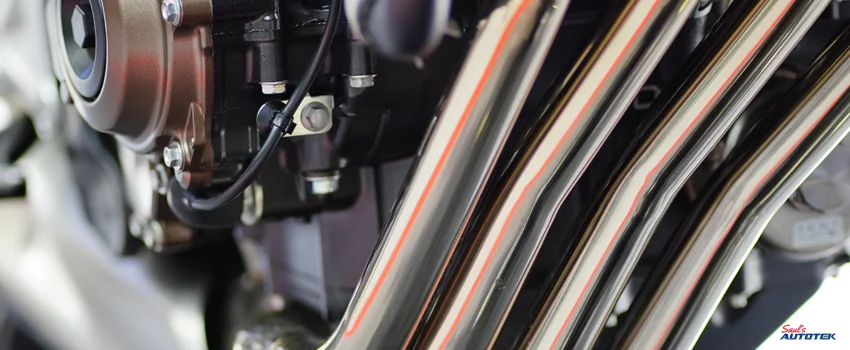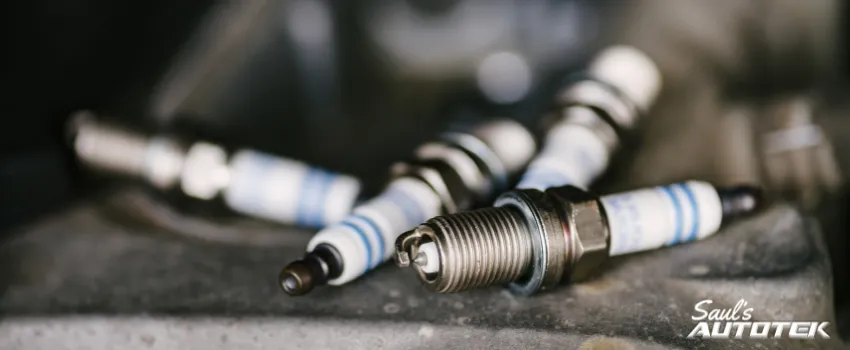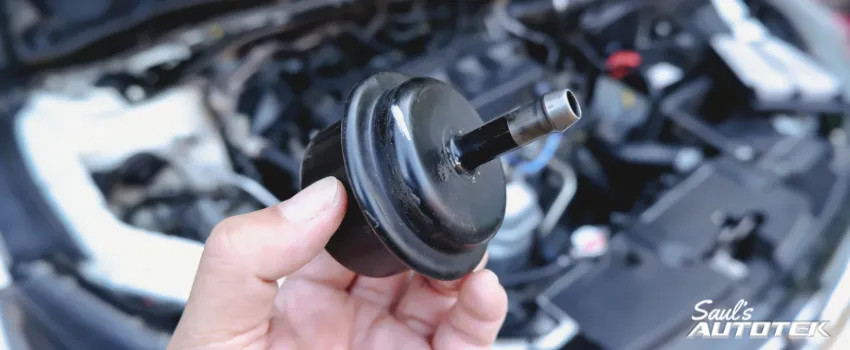The exhaust system is an essential component of a vehicle. It takes harmful gasses away from the engine and the cabin and releases them outside. It also helps the car’s performance by preventing combustion wastes from damaging other components in the engine. And if maintained properly, it would help minimize the toxic fumes emitted from the car, therefore, lessening the car’s environmental impact.
A damaged or malfunctioning exhaust can cause carbon monoxide gas to leak into the cabin, which can cause several health problems and even death to the car’s occupants. Regular maintenance, including auto exhaust system repair, is therefore essential to keep your car running safely and efficiently.
What is an exhaust in a car?
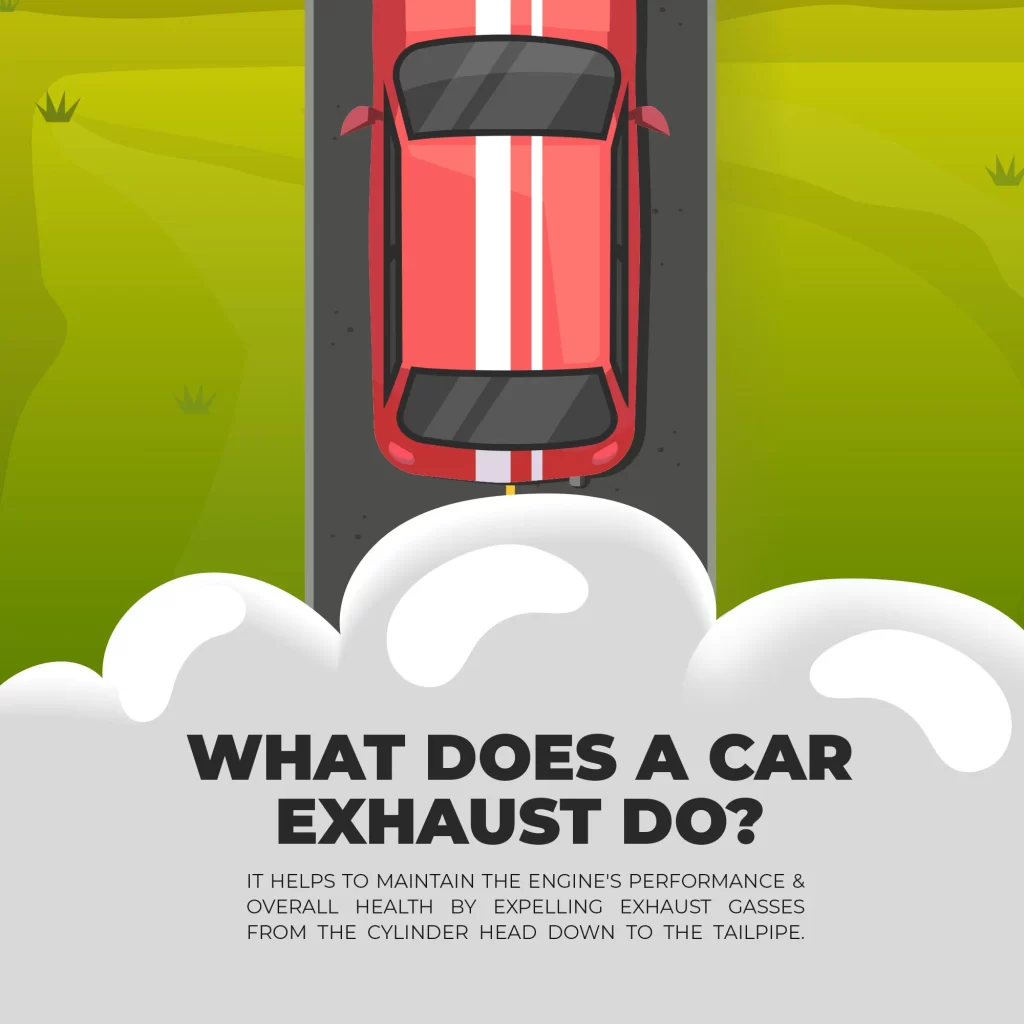
An exhaust, or exhaust system, is a vital component of the car’s engine. It helps to maintain the engine’s performance and overall health by expelling exhaust gasses from the cylinder head down to the tailpipe.
The different exhaust system parts and functions complement one another. If any of these components becomes faulty, a variety of problems can ensue, including reduced fuel efficiency and decreased engine performance.
What does a car exhaust do?
A car engine’s combustion process produces nitrogen, carbon dioxide, water vapor, and harmful gasses like carbon monoxide, nitrogen oxides, and hydrocarbons. The latter can worsen air pollution, negatively impacting the environment.
Nevertheless, the exhaust system is designed to reduce the concentration of harmful gasses, turning them into harmless substances before they are released into the environment. This is done through the various exhaust system components, including the exhaust manifold, catalytic converter, and muffler.
Parts of the Exhaust System
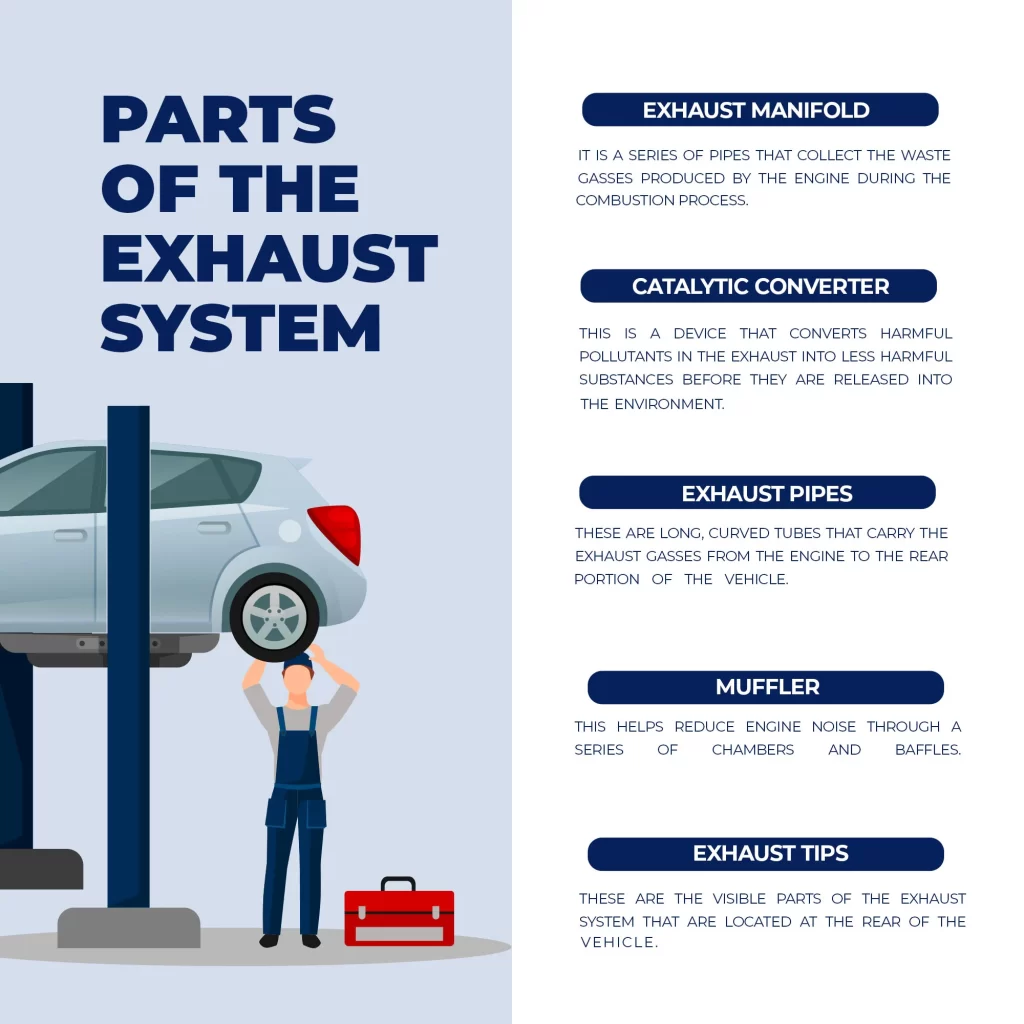
Listed below are the different exhaust system parts and functions.
1. Exhaust Manifold
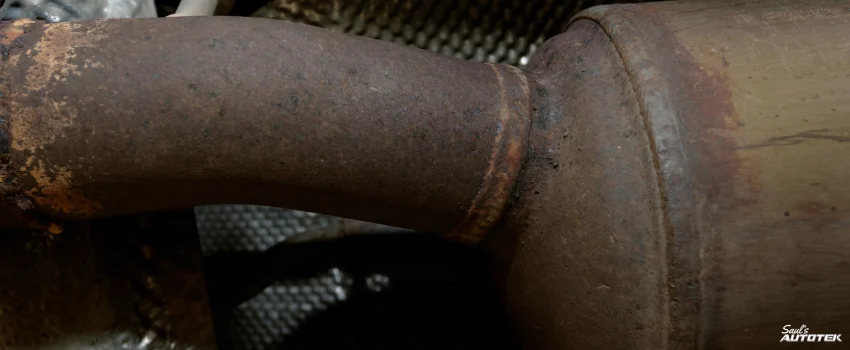
This is attached directly to the engine. It is a series of pipes that collect the waste gasses produced by the engine during the combustion process. The exhaust manifold works on directing these gasses away from the engine and into the exhaust system.
2. Catalytic Converter
This is a device that converts harmful pollutants in the exhaust into less harmful substances before they are released into the environment. This occurs through a chemical reaction that breaks down pollutants like carbon monoxide and nitrogen oxides into carbon dioxide, nitrogen, and water.
3. Exhaust Pipes
These are long, curved tubes that carry the exhaust gasses from the engine to the rear portion of the vehicle. They are typically made of stainless steel or aluminum and are designed to withstand high temperatures and the corrosive nature of exhaust gasses.
4. Muffler
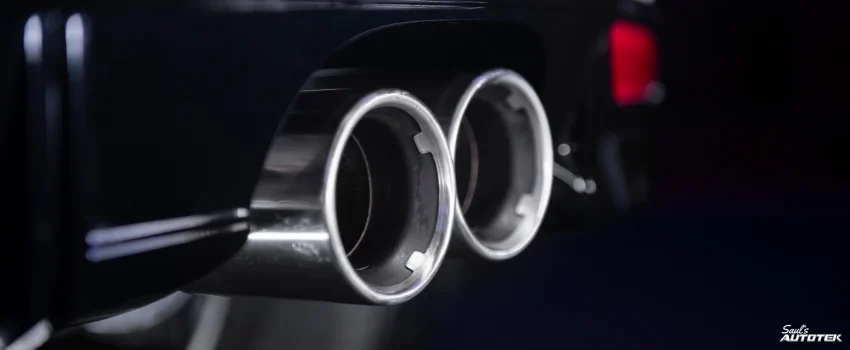
This helps reduce engine noise through a series of chambers and baffles. This absorbs and reflects the sound waves produced by the engine. The muffler also helps direct the exhaust gasses out of your car.
5. Exhaust Tips
These are the visible parts of the exhaust system that are located at the rear of the vehicle. They are usually designed to enhance a car’s physical appearance, although they are not essential to the overall function of the exhaust system.
Functions of the Exhaust System
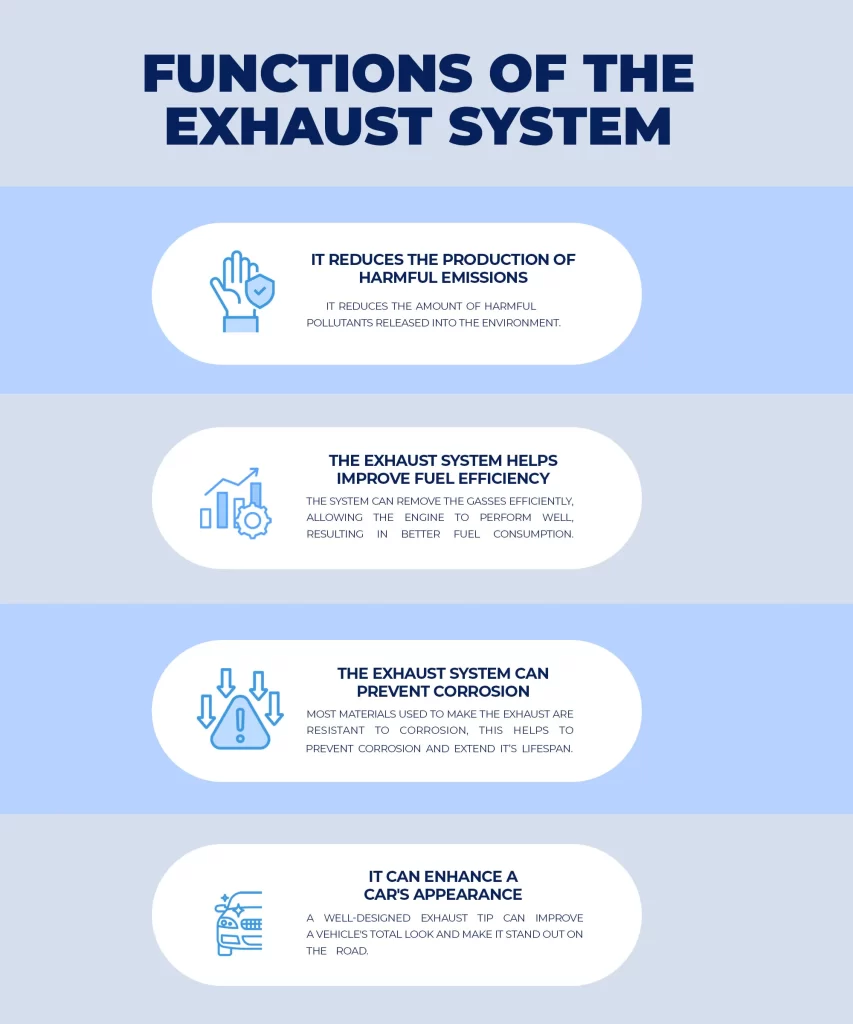
The following are the roles that the exhaust system plays when you drive your car:
1. It reduces the production of harmful emissions.
The exhaust system’s primary role is to reduce the amount of harmful pollutants released into the environment. The catalytic converter plays a critical role in achieving this goal, effectively converting pollutants into less harmful forms.
2. The exhaust system helps improve fuel efficiency.
When fuel is burned in the car’s engine, it produces waste gasses. These are expelled through the exhaust system. If designed well, the system can remove the gasses efficiently, allowing the engine to perform well, resulting in better fuel consumption.
3. The exhaust system can prevent corrosion.
The exhaust system is constantly exposed to high temperatures and corrosive gasses, making it susceptible to rust. Nevertheless, most materials used to make the exhaust are resistant to corrosion, and this helps to extend its life span.
4. It can enhance a car’s appearance.
This is where the exhaust tips acquire greater importance in the overall functioning of the exhaust system. A well-designed exhaust tip can improve a vehicle’s total look and make it stand out on the road.
Key Takeaway
Given the vital role that the various exhaust system parts and functions play in your car’s performance, it is essential that you ensure that this is functioning properly. Any problem with the system can result in harmful emissions and increased noise pollution.
Given this, regular maintenance like cleaning the exhaust system should be observed to ensure that your exhaust functions well. If not, you’ll likely encounter problems, which can be dangerous if you’re on the road. The good news, however, is that a malfunctioning exhaust system can be easily fixed, especially when placed in the hands of a professional auto repair shop.
Ensure a perfectly-working exhaust system by bringing your car to Saul’s Autotek.

What does a car exhaust do? Well, if you care for the environment, you’ll want to know its functions. For starters though, you should ensure that your auto’s exhaust system is in excellent working condition. If this is not the case, feel free to visit us at Saul’s Autotek, so the problem can be resolved.
We have a dedicated Aurora exhaust repair team that will ensure that your exhaust system is at its best once you bring it home. We guarantee exceptional repair results for every vehicle. Call us today.


